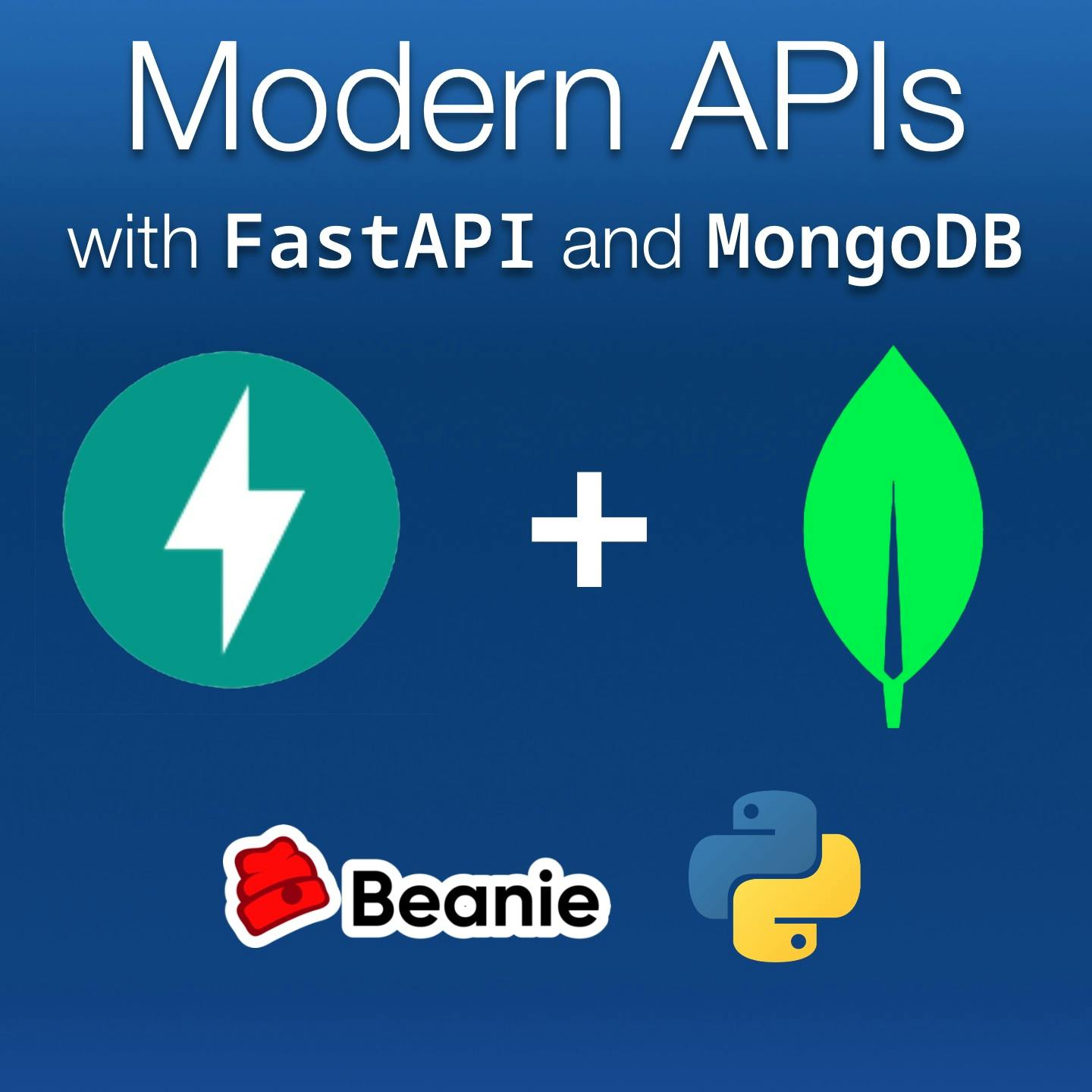Modern APIs with FastAPI MongoDB and Python
2 Weeks
·Cohort-based Course
Learn to use FastAPI, async + await, Pydantic, and MongoDB to build modern web apps with Python and become the FastAPI expert on your team.
Modern APIs with FastAPI MongoDB and Python
2 Weeks
·Cohort-based Course
Learn to use FastAPI, async + await, Pydantic, and MongoDB to build modern web apps with Python and become the FastAPI expert on your team.
Course overview
FastAPI + MongoDB
FastAPI is the fastest growing Python web and API framework, period. Take this course to add FastAPI to your toolbox.
Who is this course for
01
Anyone who wants to build an API with Python as the backend language.
02
Devs who want to leverage modern Python features (async, Pydantic, OpenAPI) for APIs
03
People who want to leverage a modern database such as MongoDB and talk to it using Python's latest APIs (async and await)
See what people are saying
Damian R.
Martin
Tim W.
FK
Rick
Be the first to know about upcoming cohorts
Modern APIs with FastAPI MongoDB and Python
Meet your instructor
Michael Kennedy
Michael Kennedy
Founder, Talk Python
Michael is the founder of Talk Python Training. He is also the host of the Talk Python to Me and Python Bytes podcasts and he is a Python Software Foundation (PSF) Fellow.
Michael has been working in the software field for more than 20 years and has spoken at numerous conferences on 4 continents.
Course syllabus
Week 1
Aug
8
Course Kickoff + FastAPI Foundations (part 1) - Session 1
Aug
10
FastAPI Foundations: async Python (part 2) - Session 2
Aug
12
Database: MongoDB and Beanie (part 1) - Session 3
Week 2
Aug
15
Database: Beanie ODM (part 2) - Session 4
Aug
17
Building a realistic, read-only API with FastAPI - Session 5
Aug
19
FastAPI Performance Testing and Course Graduation - Session 6 (final day)
Post-course
Aug
22
Optional: Course Homework + Q&A Follow up
Bonus
Course Kickoff
Course Kickoff
Python Typing (What, When, and How)
Python Typing (What, When, and How)
Pydantic Models
Pydantic Models
Async Python (What, When, Why)
Async Python (What, When, Why)
Writing Code with async + await
Writing Code with async + await
Introducing Document Databases and MongoDB
Introducing Document Databases and MongoDB
Foundations of the Beanie ODM (History, Registering Connections, etc.)
Foundations of the Beanie ODM (History, Registering Connections, etc.)
Modeling data with Document DBs and Pydantic Classes
Modeling data with Document DBs and Pydantic Classes
Querying and Inserting Data with Beanie's async API
Querying and Inserting Data with Beanie's async API
Building a realistic API with FastAPI
Building a realistic API with FastAPI
Accepting inbound data with FastAPI
Accepting inbound data with FastAPI
Performance Testing with locust.io
Performance Testing with locust.io
Course Conclusion and Final Q&A
Course Conclusion and Final Q&A
Be the first to know about upcoming cohorts
Modern APIs with FastAPI MongoDB and Python
Course schedule
6-10 hours per week, two weeks
Monday, Wednesday, & Friday
9:00am - 11:00am US PDT (UTC−07:00)
We'll meet 3 times a week for 2 weeks, 2 hours each.
Time commitment
Our cohorts require a total of 12 hours of classroom time and 4-6 hours of hands-on exercises.
Hands-on Exercises
2-4 hours per week
In addition to live, classroom lessons and interactions, you'll have between 2-4 hours of optional, hands-on exercises to reinforce the concepts covered in class.
All the best Python tech together in one course
With this course, you'll get practical experience with cutting-edge Python tech
Learning is better with cohorts
100% Live Instruction
Online courses are great (I've created many) but sometimes you really need a live in-person course to fully grok a technology.
A cohort of peers
You’ll be learning in public with a dedicated group of fellow Python devs.
Live access to experts
This course will be taught in-person by Michael Kennedy, a recognized Python expert. In addition to Michael, your cohort peers bring years of experience too.
Frequently Asked Questions
Be the first to know about upcoming cohorts
